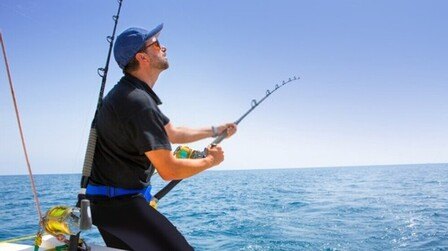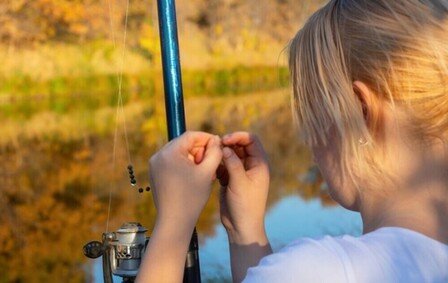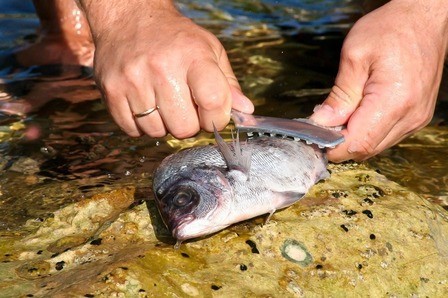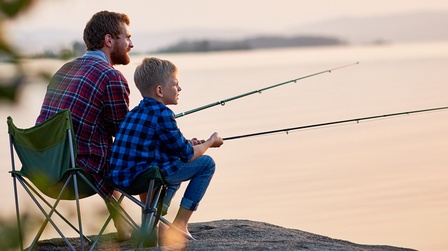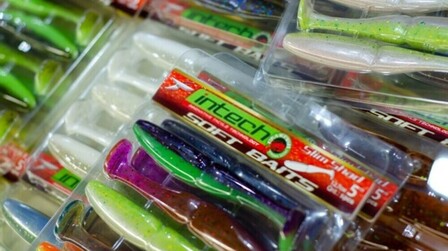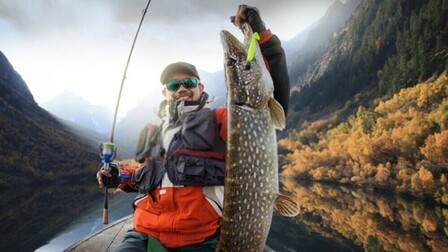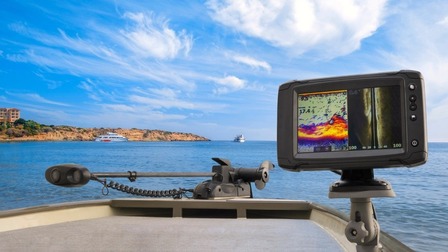I know, it’s really easy to get stressful when packing for any trips, especially if that is a kayak fishing day. You can hardly go to a fishing gear store to buy some new lines when the old ones are tangled up all.
For that reason, in this article, I’ll outline everything needed to make your kayak fishing trip joyful and worry-free. Read on!
1. Paddle
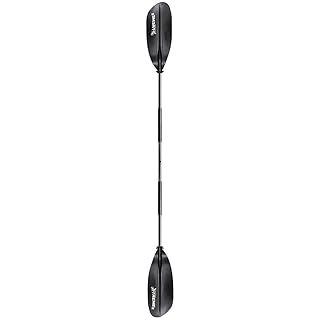
I assume that you have already chosen a good kayak and now, it’s time to pick the right paddles. For those who used to slip a paddle overboard, it’s clear that hand paddling is no fun. It conversely requires some tests and consideration before making a purchase.
Keep in mind 4 basic ideas:
Shaft
- You’ve got two choices: Straight or bent shaft.
- If you plan on a full-day tour to adjust your stroke technique, choose the straight shaft. But to minimize fatigue and discomfort in your joints during the power portion of a stroke, go for the bent one.
Blade Design
- Four common blade designs are:
- Wider blades: Highlight the quickest acceleration by lending themselves to faster powerful strokes
- Narrower blades: Emphasize lighter weight for more comfort to paddle on long stretches, which is especially useful on a multiday trip or a full-day tour
- Dihedral blades: It stands out by the rib down its center to let water flow evenly and smoothly over two halves, keeping the blades track straight.
- Asymmetrical blades: Feature shorter and narrower on one side, making the blade angle more uniformly when pushing through the water. This is also the most common at the present.
Price & Material
- There are three major kinds of paddle materials – plastic, nylon, and fiberglass. The less weight the paddles, the higher both the price and performance.
Length
- The wider the kayak and the taller the rider, the longer the paddles.
Extras:
- Paddle clip: To secure the paddles to your kayak when you need to go hands-free
- Paddle leash: To tether them to your kayak
2. Fishing Specific PFD (Personal Flotation Device)

While safety is considered the top priority in any cases, many anglers choose to ignore wearing a life jacket just because it’s too bulky and inconvenient when fishing. However, that’s not an issue nowadays because of the fishing-specific PFD.
It’s designed specifically for anglers with a more compact shape and particularly, some additional pockets where you can restfully place your tackle, pliers, and other fishing accessories.
To find a comfortable PFD fitting your body shape, there are some must-consider features:
- Adjustable side and shoulder straps to prevent cramping arm motion or vest bunching up in front. Besides, it should be easy to put on and take off without hurting your skin.
- D-rings
- Breathability: Look for a PFD that can be loosened for airflow during hot days.
- Sufficient buoyancy: Choose the one with good back flotation while rejecting those models with skeleton foam or skimpy back
- Fishing lure storage
- Color: Only go for bright colors that contrast to the water’s because you need to be seen when capsizing.
- For the price of a PFD, it is quite vast – within $30 to $350. But for beginners, you don’t need to go for a costly one.
3. Fishing Rod

Once getting to your fishing spot, selecting the right rods and reels to catch the fish in is a must-have. (You know it, fish no ways jump themselves into your kayak!)
Take note that the fishing rods that you’d like to use in a kayak will be different from ones in a boat because the space amounts are not the same. It’s always narrower in a kayak and 4 to 5 fishing rods are a good number to go.
Selecting rods for a kayak fishing trip will require much consideration.
For the length, I advise you to choose a 7’ or 7’6” rod with medium heavyweight because it can handle jigs, soft plastic, frogs, and anything with a big single hook.
You also need a 7’ fishing rod to be fast action to really drive in the big hooks with the lures while a 7’ 6” model features moderate fast action.
Why the second one should be a bit slower action?
Well… because it can handle rattle traps and crankbaits better that you can throw topwater poppers with ease. Whichever you decide to choose, ensure finding the suitable lures.
In terms of the price, an affordable fishing rod will cost $30 - $80 while a higher-end model might be somewhere between $90 - $1000.
Extras:
- Fishing rod holders: When you want to go hands-free, these tools will help to secure your rods to the kayak.
4. Fishing Reel

Next, obviously, is reel to store, release, and collect fishing line.
Unlike the other two accessories above, there’s only one thing you need to consider when choosing a fishing reel – The Type.
There are three majors:
Highlight Features | Pros | Cons | |
Baitcasting | Its spool spins during casts The spool perpendicularly sits to the fishing rod | Fit with heavier fishing lures & handle heftier lines Stronger drag system | Often occur blacklashes Hard to cast |
Spincast | Allow the fishing line to spool more freely (by simply pressing a button on the reel) | No twisted or tangled up line No backlashes Easier to cast | Not durable Line is prone to tear up Can’t handle heavier lines |
Spinning reel | Before continuing to the rod, the fishing line will go through a roller The reel is hung beneath the rod | Work well with light lures and lines Easiest to cast No backlashes | Easy to twist and tangle the line |
Note:
- On a baitcasting reel, you might find the number, like 6:3:1. This is the colon denotes the spool rotation has been made on each complete handle turn.
- In this case, the gear ratio 6:3:1 means the spool revolves 6.3 times on each complete turn of reel’s handle. Remember – the larger the first number, the more fishing line that is retrieved on each crank.
5. Fish Finder

Why need a fish finder?
If you intend to make a big fish hunting party, this is really helpful to scan for fish below the radar. Or when the water is murky, this also comes to play.
The price for a fish finder is quite variable depending on your basic and additional needs, usually within $50 to $300.
But in general, three first-and-foremost elements to consider when choosing a fish finder are:
- Smartphone-enabled
- Colorful screen
- Portable construction
6. GPS

Next is GPS. It’s same-same as the fish finder but in this case, is to track location.
Is it an essential item? Nope!
This is just an optional choice for those who are beginners or getting into new, huge fishing spot and don’t want to get lost.
GPS (aka geographic positioning systems) is available at many price points - $150 to $200. If you intend to equip your kayak fishing accessory arsenal, keep in mind two features – global support and color touch screen.
7. Hook Remover Tool

For those anglers who are in the stage of catch-and-release will try their best to give their catch chances to survive. That’s why in some difficult hook lure from a fish’s mouth, you need a hook remover tool to remove them safely.
The price for each hook remover tool will have fluctuated within $10 - $35, very affordable while avoiding dead fish floating in the ocean or river/lake. So, in consideration, this is the very first essential tool for your catch.
8. Fish Grip With Scale

The fish grip is very affordable but it’s a vital fishing gear to hold your catch and weight it.
It’s usually priced between $15 - $55 depending on the quality of materials and additional features. Three things to consider when choosing fish grips with scale are
- Scale
- Easy-to-hold handle
- A secure lip clamp
9. Pliers

Pliers are a must-have tool to help you remove the fish from tying lures or hooks.
Before choosing a suitable pair, it’s good to distinguish freshwater and saltwater pliers. If you’re a saltwater fisher, choose the specialized pliers that are crafted from high-carbon steel material to prevent corrosion.
The higher quality of the pliers, the costlier they are.
Extras:
- Fish bag: To keep the caught fish cool. When choosing a fish bag, consider if it has a zipper flap and lash-down straps. If so, pick it!
Conclusion
While equipping for your kayak to have a good fishing trip, it’s also important to prepare for yourself some basic sun protection gears, such as long-sleeved shirt, headwear, fishing hat, and sunscreen. Besides, to ensure your safety, don’t forget to bring a small first aid kit and compass.
Happy fishing!

